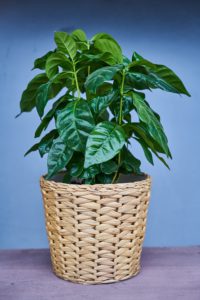4 Proven Methods to Get Rid of White Mould

The presence of indoor plants can beautify any indoor living area, I have had the pleasure over the years of being involved with many indoor garden projects that brought a restful pleasing and beautiful transformation that just breathed taking. It’s amazing how an indoor living space can be transformed into a thing of beauty with the presence of plants.
As beautiful as plants are whether growing them in or outdoors challenges can arise at times where we must take action to ensure that our indoor plants bounce back to good health. While there are so many issues that are too numerous to name we will be looking at one issue that can affect plant life and that is controlling white mould on indoor plants.
What Cause White Mould On Indoor Plants
These are a few known facts that encourage mould on indoor plants.
Moisture: Indoor plant soil that’s continually soggy or damp will cause white mould, make sure when watering indoor plants to give the right amount of water followed by allowing the soil to dry out before giving your indoor plant another drink of water.
Poor Air Circulation: If you are keeping indoor plants too close together will encourage poor air circulation that will lead to white mould development, especially during the winter time when all of your doors and windows are closed. Give your plants proper spacing for good air circulation.
Poor Light Conditions: Poor lighting conditions will not only encourage a plant that is weak and sickly ( all plants have their light requirements in order to thrive). Insufficient light equals a sickly plant. The proper lighting will also cause wet soil to dry out discouraging the development of white mould.
Poor Drainage: If the soil drains poorly or if the container has no drain holes for water drainage will lead to white mould buildup.
How to Control White Mould
1. Apple Cider vinegar: This will help to eliminate white mould, mix together 2 tablespoons of vinegar to a quart of water, and now apply this mixture to the leaves and stems that are affected. Every couple of days apply this mixture until the mould is completely gone.
2. Contaminated Soils: Soils that have not been properly stored and exposed to moisture provide the breathing ground for mould so ensure when using soil to pot or re-pot a plant that the soil is not extremely damp.
3. Neem Oil: Neem oil is very effective in the control of white mould as well as keeping other indoor garden pests at bay, simply mix together 2 teaspoons of organic neem oil to half a gallon of water in a sprayer tank. Once this solution is properly mixed begin to apply it to the infected parts of the plant. Repeat this step every couple of days until the white mould has disappeared.
4. Removing Mould from the Soil: If the mould is only on the soil’s surface simply take a plastic or disposable spoon and scrape the mould off the top of the soil’s surface. Next, dig a little deeper into the soil to ensure that the mould did not spread. Once the mould did not spread deep into other parts of the soil apply an antifungal. Before applying however read and follow the manufacturer’s directions for the best results. If white mould is found throughout the soil then it’s best to properly dispose of the soil and wash the container in a mixture of bleach and water followed by rinsing the container and starting over with fresh clean soil.
5. Baking Soda: Mix together a half-teaspoon of liquid soap, and a tablespoon of baking soda to a gallon of water, thoroughly mix this solution and add to a spray bottle. When applying ensure that you get total coverage of the entire plant.
Note: When it comes to white mould control it’s best to first follow the preventive measures that were discussed earlier to prevent white mould. What you can also do is use an organic fungicide and apply it to the stems and the leaves.
A Bonus Point just for You
Overexposure to mould can cause wheezing, skin irritation, nose stuffiness and eyes that are itchy and red.
The final word on how to get rid of white mould on indoor plants
These methods that we have discussed will ensure that your indoor plants are prevented from white mould development or bounce back from being affected by white mould. We owe it to our indoor plants to keep them growing healthy as they go to work by beautifying your indoor living space. So if you discover that your indoor plants have mould there is hope by following this guide.
About the author
Norman loves being in the garden, both at home and for his job....
he is 'Natures Little helper' being outdoors, growing his vegetables and flowers from an early age.
Now having spent over 22 years in the profession he want to give some of his knowledge to others...
his vast array of hints and tips you will find scattered over this site will help you no end growing plants in your garden.
